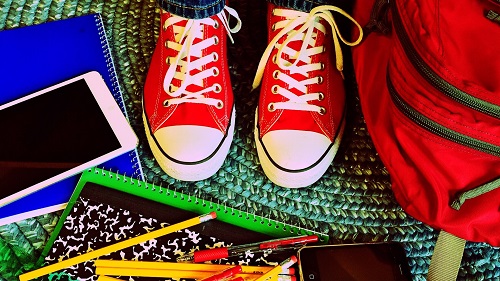How technology is reshaping classrooms, schools and the learning experience
For many parents today, the concept of technology is still based on their own experiences. There was nothing more exciting than turning up to a class and seeing a TV and VCR chained to a trolley that had been wheeled in the from the AV department. Today, technology is used in many different ways to enhance existing teaching techniques and create entirely new ways of approaching lessons. Where using a computer in class was almost a special event for those of a certain age, children and teenagers today can’t imagine a time where a major part of their learning wasn’t conducted via a laptop, a desktop or even a tablet.
The term “technology” covers everything from the devices themselves – tablets, smartphones, computers, smartboards – to the software and mediums available, such as YouTube, podcasts, and more. Taken on their own, most of these innovations seem inconsequential to schooling, but when they’re brought together in the classroom, they have the power to transform learning and teaching experiences.
What technology can add to the classroom
Self-paced learning
Students can move as quickly or as slowly as they need to understand concepts and complete tasks. A quiz performed digitally provides an instant result, rather than waiting for the teacher to mark or provide answers.
Connects the children to each other's learning
Students can learn from each other and work together. It can help students engage more closely with the school itself – through innovations like video newsletters and instant messaging – and never be far from an answer they need. It also connects their learning to other areas of their life. Their device is used both in and out of the classroom, which means that they always have their tools for learning with them.
Deeper engagement with the curriculum
Children and teenagers are drawn to the new and exciting, which makes using the latest technology a valuable way of connecting their learning to their world. Presentations with images, video and audio are more interesting than a teacher and a whiteboard and enable children with differing learning styles to access the curriculum content in different ways.
No longer limited by location
Improvements in internet speed and video-calling technology have made it simple to communicate with people anywhere in the world and students aren’t restricted to the resources present in the school. St Mary Magdalene in Adelaide has been using video calling to connect with a Mandarin tutor 8,600 kilometres away in Beijing to help their language lessons and provide a more engaging experience for the students. It’s not only about reaching out to other countries either – remote Australian schools can use the same technology to give provide students with access to people and places that were once unavailable to them.
Skills that last a lifetime
Learning how to use technology effectively is a life skill and can be a valuable way to learn about responsibility. Expensive devices require maturity and good decision-making skills to ensure they don’t get damaged or lost; however, there are also lessons about their use that can be taught through their application in the classroom. Cyber-bullying, sexting, trolling and cyber-safety are no longer restricted to certain demographics of students. The proliferation of smartphones and tablets, as well as social media platforms and apps, means that all children and teenagers need to learn cyber-awareness and how to identify, avoid and report problems or threats. This helps to develop digital skills early and cement responsible use, ensuring students are digital-ready for tertiary education, employment and general adult life.
Useful Links:



